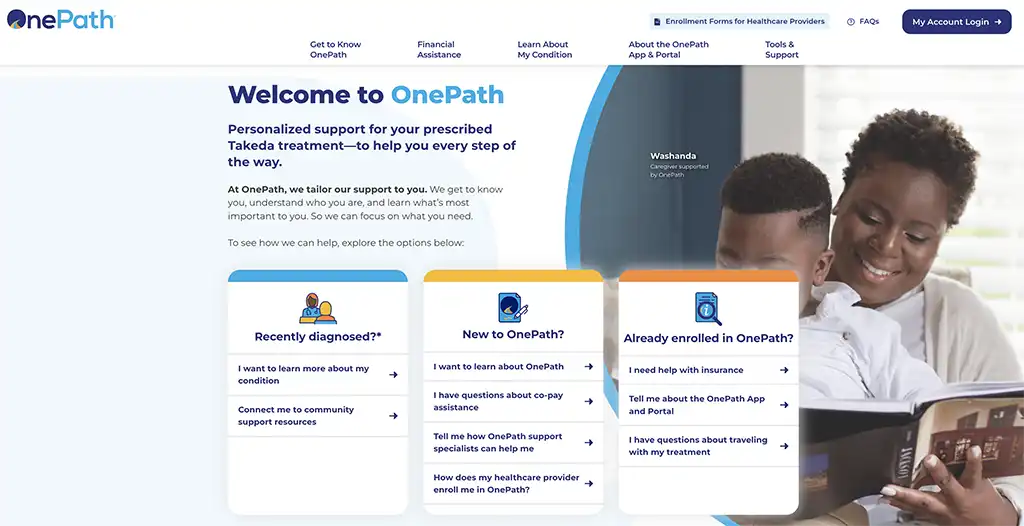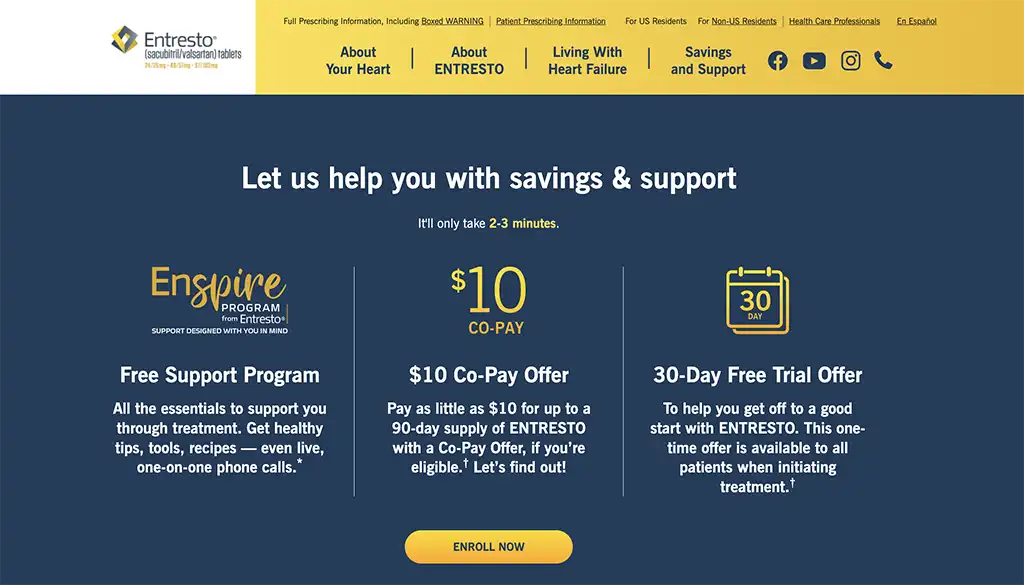User experience (UX) refers to the experience that a person has when interacting with a product or service. In healthcare, UX is especially important as digital experience affects patient access to medical care and services through websites or other digital platforms. This is particularly true for patient support program websites that are designed to provide access to medication.
What are pharma patient support programs?
Many pharmaceutical companies offer patient support programs to complement prescribed treatments, particularly for complex therapies. These programs aim to provide holistic support patients need throughout their healthcare journey. This can include everything from patient education and disease management guidance to programs that provide financial assistance to help eligible patients overcome financial barriers and afford the medications they need. It is important that healthcare providers also find these programs easy to use and valuable, making it more likely that they recommend them to their patients.
Ultimately, well-designed patient support programs, with a focus on UX, can significantly improve health outcomes by ensuring patients receive the education, support services, and financial assistance they need to adhere to their treatment plans and experience a smoother healthcare delivery process.
Patients can be more vulnerable to the complexities of digital experience, as they are grappling with understanding their condition, staying on treatment, and navigating healthcare system. So how can the organizations approach the design of patient support program websites to support patients and offer the most value?
There are three aspects of patient centricity according to the digital experience scale for patients that we developed based on patient interviews and user research conducted over 25+ years:
- Value: The website should clearly convey its value to patients, acknowledge their needs, and explain how it’ll address them right away.
- Simplicity: Interfaces and processes should be kept simple, with patients' ease-of-use in mind, and provide adequate guidance. Patients should not feel overwhelmed by any interaction.
- Connectivity: Programs should strive to provide a connected experience, where patients can access various brands and services in a unified manner across different devices and applications.
What are the best pharma websites for patient support?
We have compiled a list of pharma patient support program websites that contain some of these UX best practices (in arbitrary order):

Janssen CarePath offers step-by-step guidance for every stage of the process, guiding the user through understanding their coverage and providing explanations for complicated insurance lingo and other terminology, thus empowering the patients. Personalized options based on the patient's medication or insurance coverage provide additional guidance and help patients understand options available to them.
The page uses progressive disclosure to collect information to focus on one step at a time and reduce cognitive load. It also anticipates users' needs and stays one step ahead by offering contextual details and information. Interactive elements and infographics are leveraged to explain complex topics and increase engagement.

Alnylam Assist does an excellent job of providing personalized support. The landing page lets the user to self-identify from the very beginning and then tailors content to them. Caregivers, an often-forgotten audience, are acknowledged and their needs are catered to. The language used to collect this information mimics a live conversation, creating a more intuitive digital experience.

Pfizer Oncology Together lists relevant user actions right on the landing page based on the patients' needs. Each button is concisely named and conveys the value proposition well.
Online enrollment is also quick and efficient: the form contains simple fields, allowing patients to provide basic personal information with ease and confidence. Patients also have an option to sign up for multiple support programs at once, making it easier and less time-consuming.

Takeda OnePath offers personalization by distinguishing between different patient types and the progress in their healthcare journey. Although there is a lot of information and links on the homepage, the chunking of information and visual aids help to digest the content easier.
In addition, patients can select their condition, which ensures that displayed program details and expectations are personalized to the patient.

The landing page of BMS Access Support allows for easy and intuitive navigation. There is quick access to information that is of value to patients — such as program offerings and financial support options — in concise and patient-centric language. These items are both present in the main navigation and as content on the homepage.
The website also provides patients with sufficient guidance. The footer contains quick access to various resources, from live support to self-service options, that patients can access across all pages of the website.

The Enspire Program communicates the value proposition of the program well. The visual hierarchy helps the patients to quickly pinpoint the most important program offerings as soon as they land on the page. The message “It'll only take 2-3 minutes” is also an effective way to notify the users of the time commitment and set expectations during the enrollment process. The program also addresses patients who may not qualify because of their insurance coverage, offering alternative solutions to those with different needs.

Cosentyx Connect simplifies the enrollment process for patients by leveraging progressive disclosure — a design pattern that allows users to focus on one task at a time. There is only one personalization question, which makes it less overwhelming. At the conclusion of this set of questions, the website clearly identifies all the support options that are available based on the patient's unique circumstances. Patient then can decide which options they would like to signing up for.

Entyvio Connect provides ease of enrollment for patients. The enrollment process is transparent in that it offers visibility of both completed and next steps. Such transparency is crucial to building trust with patients, especially when requesting or providing sensitive information. The process is also forgiving of user errors, allowing patients to easily modify information entered in previous steps. At any point in enrollment, the patient can clearly identify where they are, navigate back to previous steps, and anticipate next steps.

Otsuka Patient SupportTM is another good example of a website that provides personalized support by collecting quick information about the patient. This helps the users to accomplish their goals easier, especially when the website contains a lot of content. The page guides the patients by using easy-to-understand conversational language.
The interface is also clean and simple, minimizing distractions so that the patients' attention is drawn to the selections.

Takeda Hematology Support Center prioritizes important information and places it at the top of each page. The chunking of information makes it easier to digest despite having a lot of content on the homepage. Representation of real people who are going through similar experiences can also make patients feel less alone in their journey.
This program also acknowledges different preferences for the means of enrollment and provides an easy way to contact case managers by phone for patients who may need more guidance.
Healthcare and pharma companies need to consider the needs of patients and healthcare professionals when designing the user experience of digital products and services. Patient UX is especially important, and by focusing on patient-centric design principles, companies can create better access and contribute to improving patient outcomes.
When patients can easily access medical care and services through digital patient support services and patient assistance programs, they are more likely to receive and benefit from timely treatment. Additionally, when patients have a positive experience accessing medical care through digital platforms, they are more likely to follow through with their treatment plans, leading to better overall health outcomes.
This article analyzes and comments on certain pharmaceutical brands and companies. Intechnic Corporation is not affiliated, associated, authorized, endorsed by, or in any way connected with the brands or companies addressed in the article.



